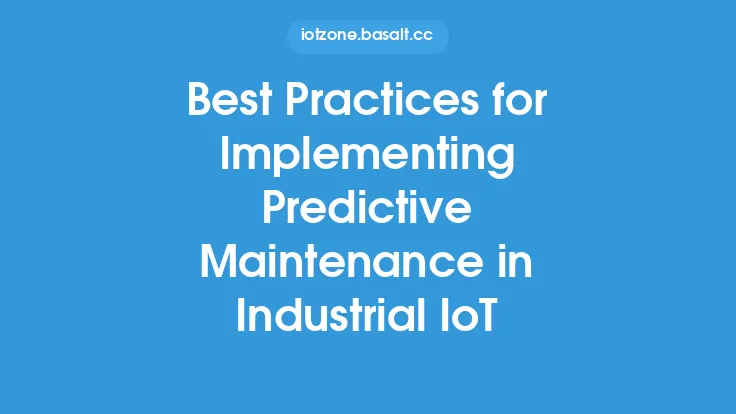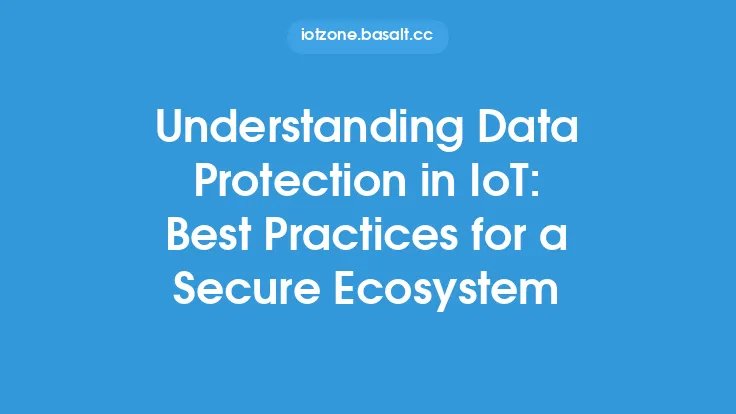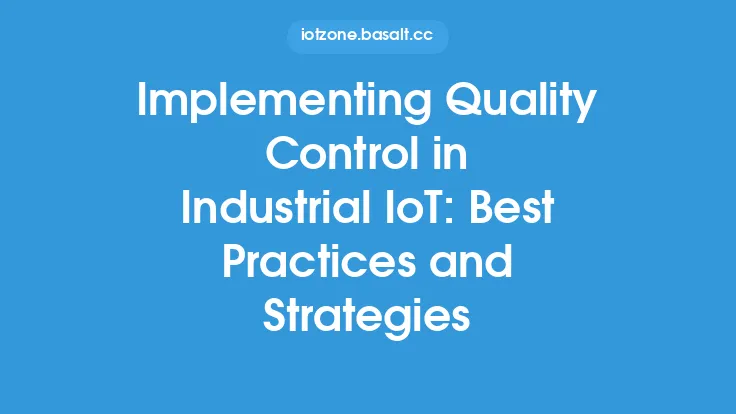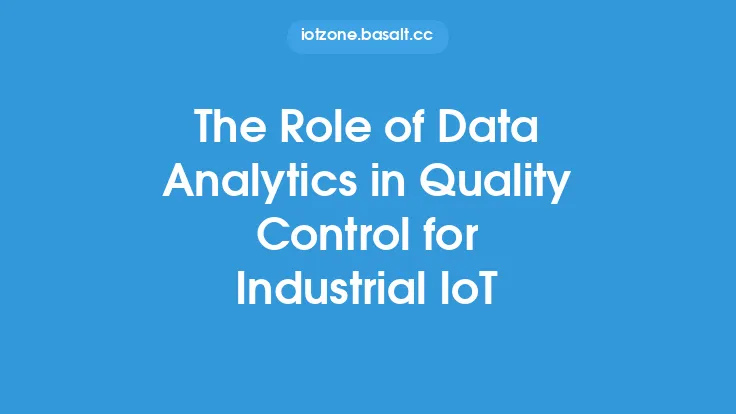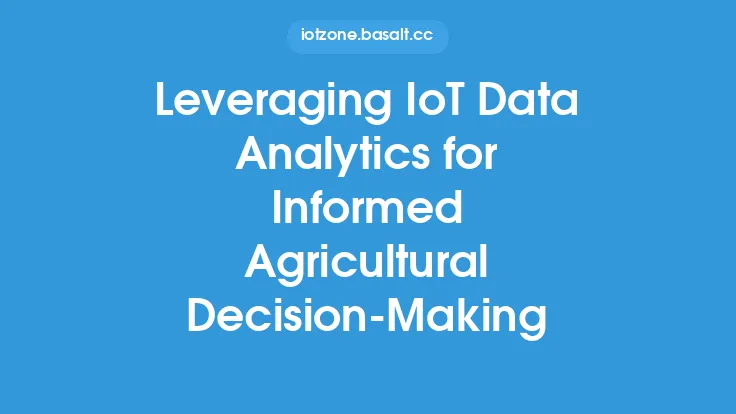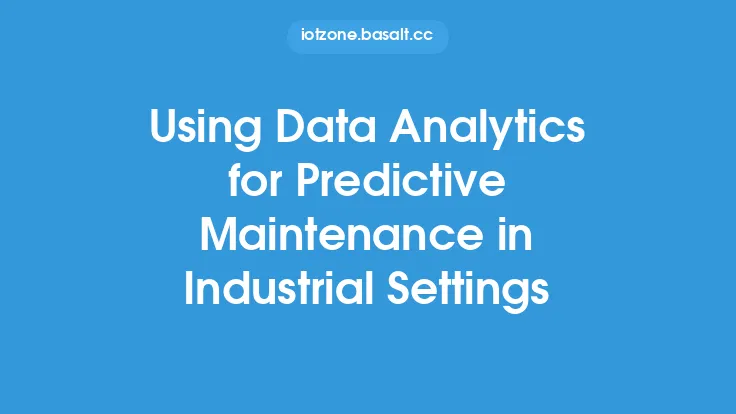Implementing IoT data analytics in an organization can be a complex and challenging task, requiring careful planning, execution, and maintenance. With the increasing amount of data being generated by IoT devices, it is essential to have a well-structured approach to analyzing and extracting insights from this data. In this article, we will discuss the best practices for implementing IoT data analytics in an organization, focusing on the technical and strategic aspects of this process.
Introduction to IoT Data Analytics
IoT data analytics refers to the process of analyzing and extracting insights from data generated by IoT devices, such as sensors, actuators, and other connected devices. This data can be used to improve operational efficiency, reduce costs, and enhance decision-making. IoT data analytics involves a range of techniques, including data processing, data storage, data visualization, and machine learning. The goal of IoT data analytics is to turn raw data into actionable insights that can inform business decisions and drive innovation.
Data Ingestion and Processing
One of the critical components of IoT data analytics is data ingestion and processing. This involves collecting data from various IoT devices, processing it in real-time, and storing it in a scalable and secure manner. There are several data ingestion tools and technologies available, including Apache Kafka, Apache NiFi, and AWS IoT Core. These tools provide a scalable and fault-tolerant way to collect and process large amounts of IoT data. When selecting a data ingestion tool, it is essential to consider factors such as data volume, data velocity, and data variety.
Data Storage and Management
Once the data is ingested and processed, it needs to be stored and managed in a way that allows for efficient analysis and retrieval. There are several data storage options available, including relational databases, NoSQL databases, and cloud-based data warehouses. The choice of data storage depends on the type and volume of data, as well as the analytics requirements. For example, time-series databases such as InfluxDB and OpenTSDB are optimized for storing and querying large amounts of time-stamped data. Data management is also critical, involving data governance, data quality, and data security.
Data Analytics and Visualization
Data analytics and visualization are critical components of IoT data analytics. This involves using various techniques, such as statistical analysis, machine learning, and data mining, to extract insights from the data. There are several data analytics tools and technologies available, including Python, R, and SQL. Data visualization is also essential, involving the use of charts, graphs, and other visualizations to communicate insights and trends. Some popular data visualization tools include Tableau, Power BI, and D3.js.
Machine Learning and Predictive Analytics
Machine learning and predictive analytics are advanced techniques used in IoT data analytics to predict future trends and patterns. This involves using algorithms such as regression, classification, and clustering to analyze historical data and make predictions about future events. Machine learning can be used for a range of applications, including predictive maintenance, quality control, and energy management. Some popular machine learning tools and technologies include scikit-learn, TensorFlow, and PyTorch.
Security and Governance
Security and governance are critical aspects of IoT data analytics, involving the protection of data from unauthorized access, use, or disclosure. This includes ensuring the confidentiality, integrity, and availability of data, as well as complying with relevant regulations and standards. Some best practices for security and governance include encrypting data, using secure authentication and authorization protocols, and implementing access controls. Governance involves establishing policies and procedures for data management, including data quality, data retention, and data disposal.
Scalability and Performance
Scalability and performance are essential considerations in IoT data analytics, involving the ability to handle large volumes of data and provide real-time insights. This includes selecting scalable data ingestion tools, data storage options, and data analytics platforms. Some best practices for scalability and performance include using cloud-based services, implementing load balancing and caching, and optimizing database queries.
Implementation Roadmap
Implementing IoT data analytics in an organization requires a well-structured approach, involving several steps and stages. The first step is to define the business case and identify the key use cases for IoT data analytics. The next step is to select the relevant technologies and tools, including data ingestion, data storage, and data analytics platforms. The third step is to design and implement the IoT data analytics architecture, involving the integration of various components and systems. The final step is to deploy and maintain the IoT data analytics solution, involving ongoing monitoring, testing, and evaluation.
Conclusion
Implementing IoT data analytics in an organization can be a complex and challenging task, requiring careful planning, execution, and maintenance. By following best practices such as data ingestion and processing, data storage and management, data analytics and visualization, machine learning and predictive analytics, security and governance, scalability and performance, and implementation roadmap, organizations can unlock the full potential of IoT data analytics and drive business innovation and growth. As the IoT continues to evolve and expand, the importance of IoT data analytics will only continue to grow, making it essential for organizations to develop a strategic and well-structured approach to analyzing and extracting insights from IoT data.
